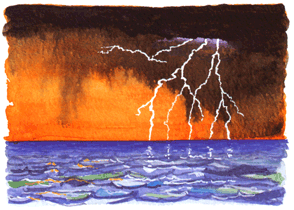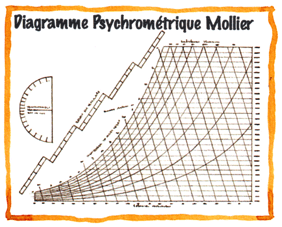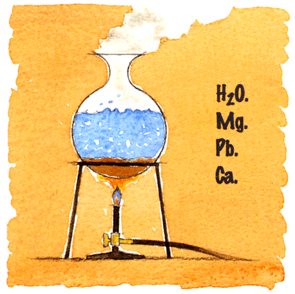Evolution of humidification science

When the Earth was created, water was a fundamental ingredient, with all objects, animate and inanimate, possessing a specific water content. Water not only covers most of the Earth’s surface as oceans, lakes and rivers; it is also a major element in the atmosphere, in its gas form – humidity. Variations in the humidity of ambient air can have undesirable or harmful effects upon the objects which it surrounds? Since objects will either absorb or give up water content until a point of equilibrium is reached. The science of humidification has evolved to compensate for humidity levels which are inappropriate for the activities in, or occupants of, internal climates.
Psychrometric chart

The development of the Psychrometric chart was a major advance in internal climate control, facilitating the precise calculation of both absolute and relative humidity. With such an affective tool, and now computer sizing programmes, the addition of humidity to a conditioned space appears straightforward. Having calculated the amount of steam needed, it’s just a question of boiling water, isn’t it? Much like making a cup of tea! If only life were so simple…
Like trying to blow up a balloon with a hole

Unlike the sensible energy that constitutes the temperature of air, humidity is the result of the latent energy that has transformed water into a gas. Humidity therefore possesses powerful pressure characteristics and will always try, much like the wind, to equalise its pressure across the space available; it will even go through walls! Humidification can be likened to trying to blow up a balloon that has a hole in it, only the size of the hole is constantly changing.
The critical and complex aspect

And if the laws of physics weren’t enough, a dose of chemical inconsistency has meant a constant challenge for humidification specialists. Whilst we learn in school that water (H2O) is made up of hydrogen and oxygen, what the encounter in the real world is a far different story. The other substances dissolved in water present an ever-changing problem; maintaining the concentration of these substances at acceptable levels, and disposing of the residues they create as water is evaporated, is a critical and complex aspect of humidification.
 Youtube
Youtube  LinkedIn
LinkedIn